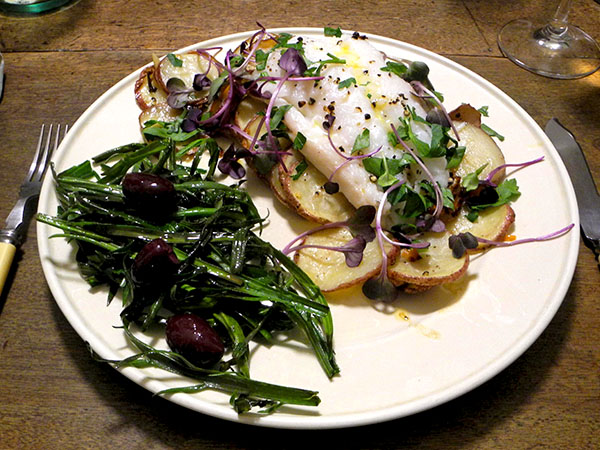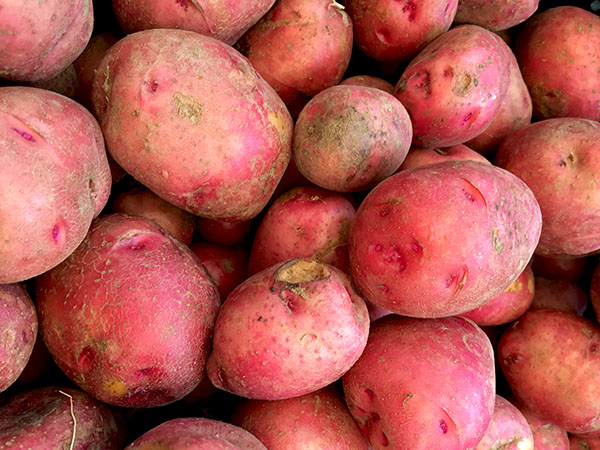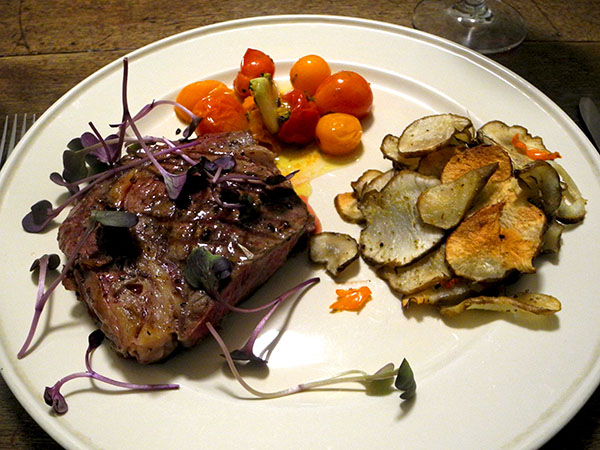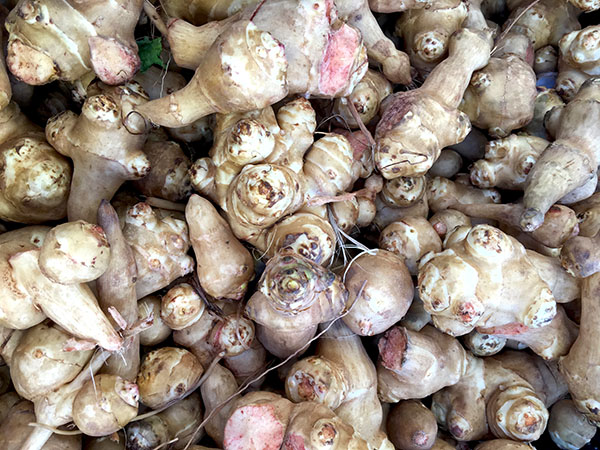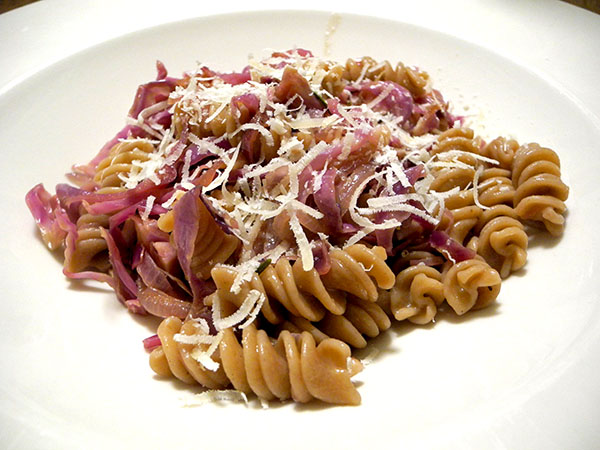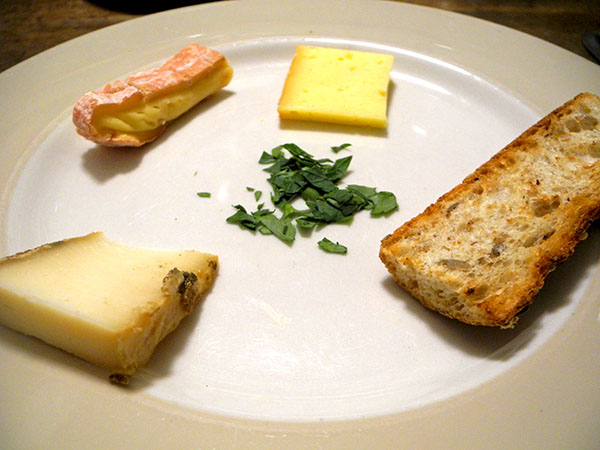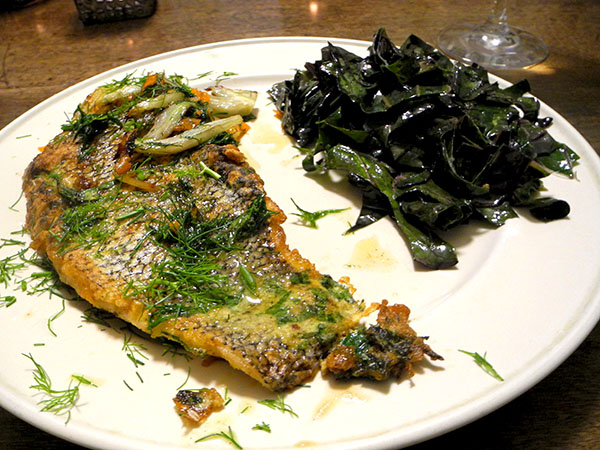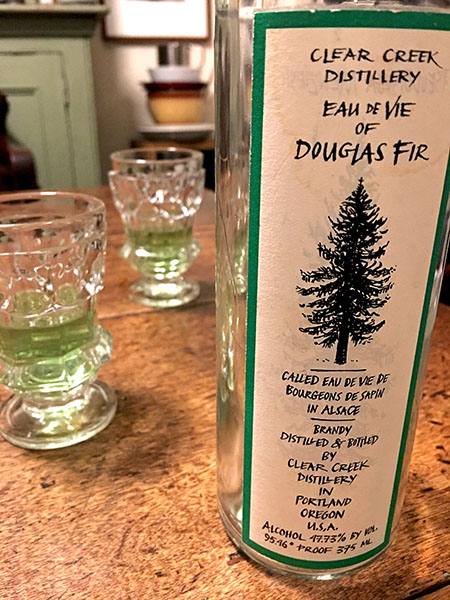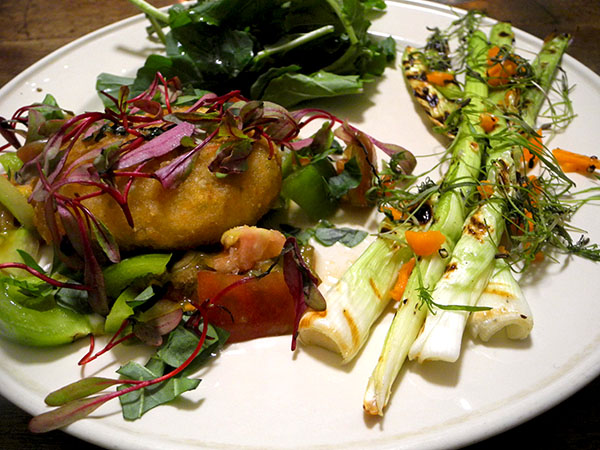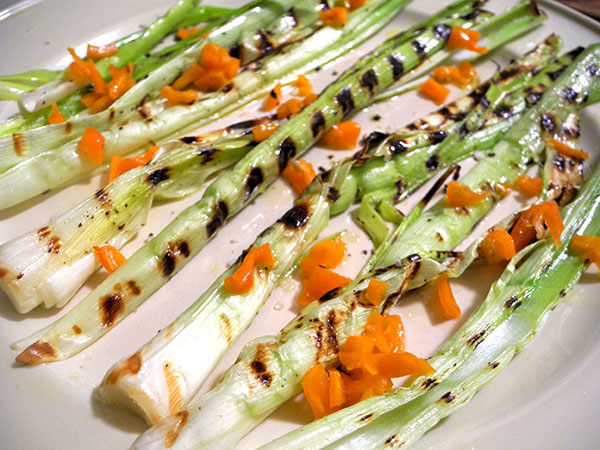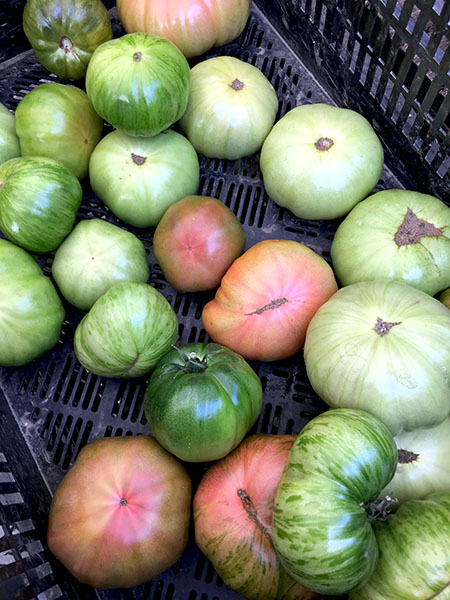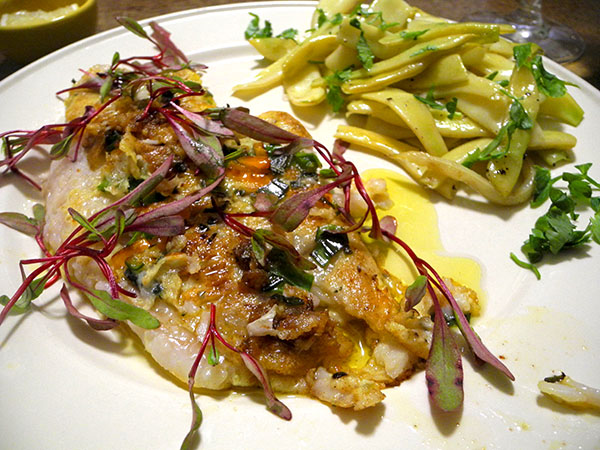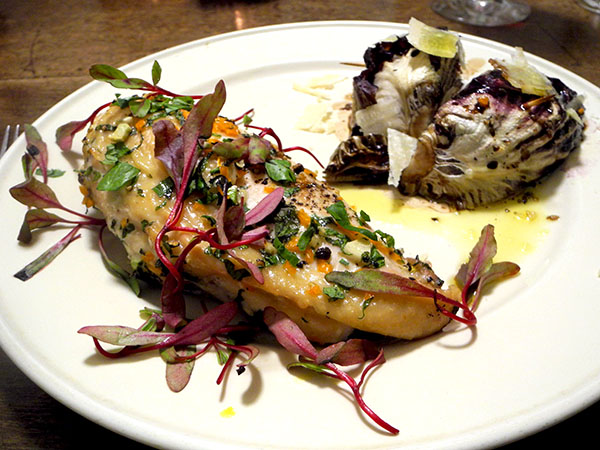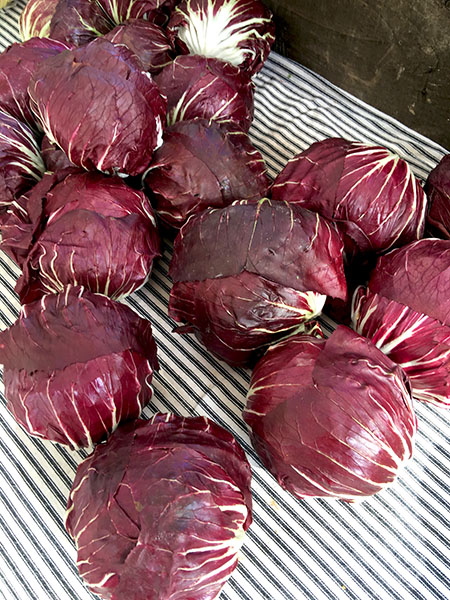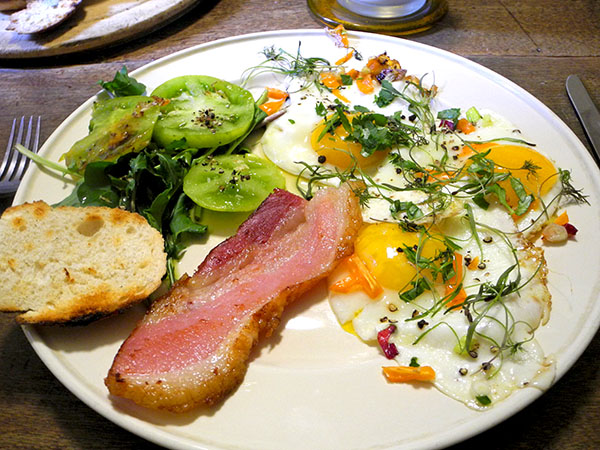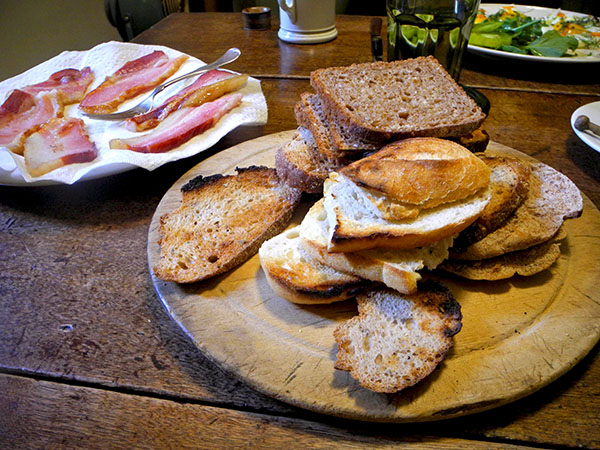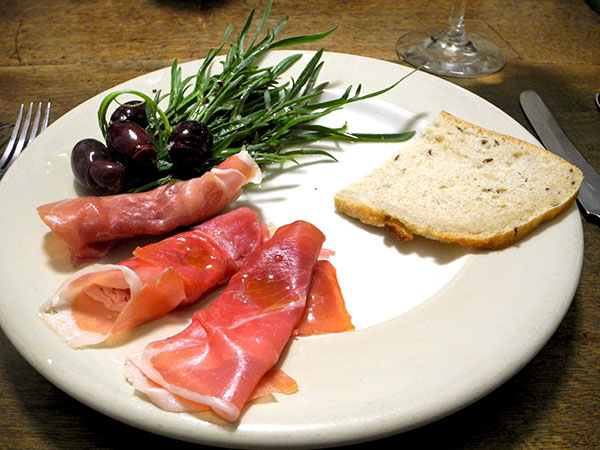

In my head: The idea of a pasta came first, then the tomatoes, the prosciutto antipasto later, just before the pasta and tomatoes got some company, minutina was added to the prosciutto, along with bread, and then a few olives, and finally a bit of dried habanada pepper jumped into the pasta mix, altering its taste chemistry, and now we had a very satisfying meal.

I get the fantastic scent of these dried peppers just looking at this picture.
- The salumi was Colameco’s prosciutto (3 ounces), from Whole Foods; the minutina was from Norwich Meadows Farm, and both were drizzled with good olive oil and a squeeze of a small lemon grown locally by David of Fantastic Gardens of Long Island, some pitted Kalamata olives from Whole Foods arranged between them; the bread was Orwasher’s ‘Righteous Corn Rye’ boule (here the word, ‘corn’ derived from ‘korn’, means grains or kernels, and it has usually meant rye grain in Jewish Eastern Europe), from Chelsea’s Down to Earth Farmers Market
- the pasta was prepared much along the lines of this recipe, halving the amounts, using homemade breadcrumbs, parsley from Norwich Meadows Farm, Pecorino Romano from Buon Italia, lemon zest from one of David’s Fantastic Gardens of Long Island local lemons, Afeltra spaghettone, garlic from Stokes Farm, cherry tomatoes from Norwich Meadows Farm, but the major variation from the basic recipe was the introduction of a very small amount of crushed almost-but-not-quite-carbonized home-dried habanada pepper into the pot while warming the garlic and red pepper flakes in the olive oil, just before adding the tomatoes, giving the sauce a very subtle, slight smokiness
- the wine was an Italian (Toscana) white, Villa Antinori Bianco 2015
- the music was Handel’s 1721 opera, ‘Floridante, Alan Curtis conducting Il Complesso Barocco, with Roberta Invernizzi, Marijana Mijanovic, and Joyce DiDonato, among others
